Peak allergy season is quickly approaching. This means managing your indoor air environment is crucial for sustaining a healthy and comfortable living space. Airborne particles, including pollen, dust mites, and mold spores, can significantly impair air quality while exacerbating allergies and respiratory conditions like asthma.
Poor air quality also contributes to more subtle health effects, such as fatigue, headaches, and concentration difficulties that can impact your comfort and productivity. Improving your home’s air quality is essential, especially when allergens are at their peak. Here are nine strategies for going about it.
1. Replace Your HVAC Filters Regularly
A clean HVAC filter is one of the best approaches for fighting allergens. Your filters trap airborne particles, including pollen, pet dander, and dust, that can compromise indoor air quality. Over time, filters become clogged with these particulates, which limits their ability to prevent allergens from circulating back into your home.
To keep allergens outdoors where they belong, replace your HVAC filters regularly. Look for filters with a Minimum Efficiency Reporting Value (MERV) rating between 8 and 13. These high-performing household filters are capable of capturing the smallest contaminants. Depending on your filter type and household needs, replacements should ideally occur every 30 to 90 days. You can typically use filters with up to a MERV 13 rating for the highest level of particulate removal in most household systems. However, consult your manual or check with a professional HVAC technician to ensure your equipment can handle its thickness.
2. Use Air Purifiers
Air purification devices offer additional protection against contaminated air. They enhance indoor air quality by capturing allergens that HVAC filters can miss. They work by pulling room air through layers of filters, trapping particles like pollen, mold spores, and dust mite debris. When selecting an air purifier, consider the size of the space and the Clean Air Delivery Rate (CADR) to ensure coverage.
For whole-house filtration, systems that integrate with your existing HVAC unit are also an option. These systems use HEPA filters, which are the equivalent of MERV 17 or higher. Systems that use UV lights can sanitize bacteria and viruses.
3. Manage Your Humidity Levels
Controlling indoor humidity helps you curb indoor allergen growth. High humidity promotes dust mites and mold, and each can trigger allergies. Ideally, indoor humidity should be kept between 30% and 50%. Add dehumidifiers in damp areas and ensure proper ventilation in bathrooms and kitchens to sustain these levels.
Running air conditioners during warmer months, of course, cools your home. However, this also removes excess moisture from the air. Regular monitoring with a hygrometer — an inexpensive tool that measures humidity — can help you keep track and adjust your methods to maintain the optimal environment for minimizing allergens and safeguarding your respiratory health.
4. Vacuum and Disinfect Often
Eliminating allergens from surfaces and the air is crucial for maintaining a clean indoor environment. This is especially true if you already struggle with allergies or asthma. Vacuuming with a HEPA filter-equipped vacuum cleaner can capture a significant percentage of airborne particles. We suggest vacuuming at least once a week, focusing on the areas of your carpets, floors, and upholstery where dust accumulates the most.
For dusting, use damp or electrostatic cloths to prevent scattering particles back into the air. Disinfecting frequently touched surfaces also helps reduce allergen presence, especially during peak seasons when pollen tracks indoors.
5. Purchase Houseplants
While aesthetically pleasing, houseplants are also an excellent natural approach for improving indoor air quality. The plants absorb carbon dioxide and release oxygen through photosynthesis, producing fresher air. Moreover, some species are known for their ability to filter common airborne toxins, like formaldehyde and benzene.
With its low maintenance and ability to emit oxygen at night, the snake plant makes it a popular choice for bedrooms. Likewise, the peace lily can remove several common pollutants and is known for its low maintenance requirements. Spider plants grow rapidly and are recognized for their filtering capabilities. Adding these and other air-purifying plants like aloe vera and Boston ferns around your home can significantly enhance your air quality while bringing a welcomed natural element indoors.
6. Maintain Clean Ductwork
Your ducts can accumulate dust, pollen, and other allergens over time. These elements are then dispersed throughout your living environment, diminishing air quality. To maintain fresh air, having your ductwork inspected and cleaned regularly is crucial.
Signs that suggest you may need a duct cleaning include:
- Visible mold growth inside the ducts
- Noticeable accumulation of dust or debris
- Unusual odors from your supply registers
- Traces of insect or rodent infestation
Also, consider cleaning your ductwork after completing home renovations or if someone in your household has developed allergies or respiratory issues.
7. Consider Upgrading Your HVAC
Advancements in HVAC technology have led to systems with improved filtration capabilities and enhanced air quality features. Modern units often include built-in dehumidifiers, advanced air purifiers, and smart thermostats for better-regulated air quality and comfort. Additionally, newer models are more energy-efficient and considerably reduce your energy bills.
If your current system is over 10 years old, you may want to consider upgrading it. These units require frequent repairs and often struggle to maintain comfortable temperature levels. Upgrades should also be on your radar after noticing an increase in dust accumulation or if allergies seem to flare up while indoors.
8. Improve Ventilation
Proper ventilation is central to diluting indoor pollutants and increasing fresh air intake. A well-ventilated home can significantly improve indoor air quality. One strategy to enhance ventilation is to open windows and doors when weather permits. This encourages cross-ventilation that flushes out stale indoor air. Exhaust fans in the kitchen and bathrooms also help remove contaminants and the excess moisture that promotes mold growth.
Trickle vents or energy recovery ventilators (ERVs) systematically exchange indoor and outdoor air while maintaining energy efficiency. Likewise, remember to ventilate whenever undertaking activities that release pollutants, such as painting or cooking, to ensure these contaminants do not linger in your indoor environment.
9. Monitor Your Air Quality Levels
Keeping track of indoor air quality is another proactive measure you can take to manage pollutant levels. Indoor air quality monitors can measure several conditions, including particulate matter, volatile organic compounds (VOCs), humidity, and temperature. These devices let you identify trends and problematic areas that may require attention.
Some monitors have smart technology that alerts you when pollutant levels are high or environmental conditions change. Monitoring is particularly vital for households with individuals with asthma, allergies, or other respiratory conditions, as it helps create a living space that supports improved health and well-being. Regularly assessing air quality and responding to the feedback from these monitors can lead to a cleaner, safer home environment.
Remaining Proactive With Your Indoor Air Quality
Staying on top of indoor air quality is essential for maintaining a healthier, more comfortable home environment. At DeWolfe Contracting Inc, we help West Boylston, MA homeowners like you ensure a clean and safe indoor breathing environment. Beyond air quality solutions, we offer HVAC installations, maintenance, and repairs. We also offer a full range of plumbing services. Contact DeWolfe Contracting Inc today to schedule your next indoor air quality consultation!




